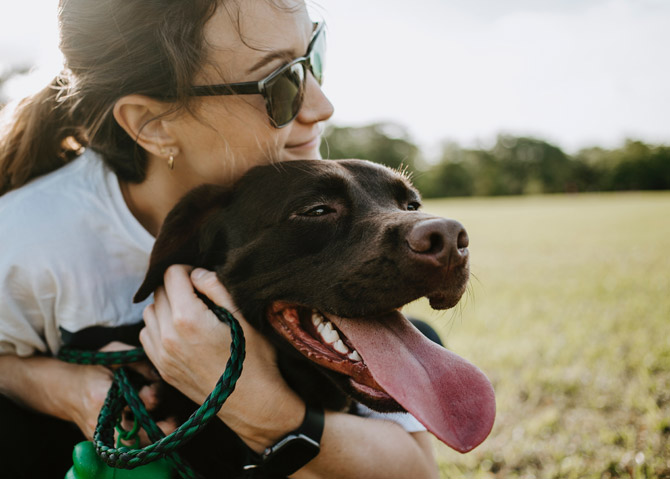When it comes to pet parenting, there’s a lot to learn. However, whether you are welcoming a puppy or an older pet into your home, it’s important to avoid making too many pet parenting mistakes.
Of course, the best way to do this is to clue up on those all-too-popular mishaps and try your very best to avoid making similar blunders. Here are 5 common pet parenting mistakes to steer clear of.
1. Overfeeding
Sadly, a key mistake that many pet parents make is overfeeding their fur pal. There are many reasons this can happen. It may be that they are incorrectly portioning their pet’s food. Perhaps they are giving too many treats or allowing a greedy pet to eat its companion’s food.
The best way to check if your pet is overweight or not is to check out the World Small Animal Veterinary Association’s Body Conditioning Score.
Furthermore, to avoid making the mistake of overfeeding your furry friend, follow these tips:
- Be sure to measure out the correct amount of food for your pet’s size and age. Remember, not all cups are the same; failing to measure the right amount of food can lead to obesity.
- Ensure your pet has a quiet place to eat and, ideally, eats alone. When many pets are fed together, often there can be one greedy one who tends to eat most of the food.
- Be careful if using a free feeding regimen. You still need to keep track of the amount of food your pet is consuming over the day.
- Indoor cats are more at risk of weight gain due to inactivity. So, make sure your pet gets regular exercise.
2. Careless training
We all know training is an important part of being a responsible pet parent, right? A recommended style of training is a reward-based system, such as positive reinforcement. However, it’s not just the style of training you need to be mindful of; you also need the right equipment.
Wait, that doesn’t mean you have to rush out and buy the most expensive leash or the fanciest harness. It just means you need to make sure you’re using the correct collar and leash.
For example, large dogs that tend to pull a lot are often more suited to a harness instead of a leash. This can help train them to walk next to you, rather than constantly pulling ahead of you.
Likewise, dogs with “smooshed” faces (AKA brachycephalic breeds), like Pugs, French Bulldogs and Shih Tzus, should wear a harness while walking. This is because a leash can put extra and unnecessary pressure on its windpipe.
So, when it comes to all aspects of training it’s essential to take it seriously and do your research. Three key things to consider are:
- The various methods of training and which one is best for you and your fur pal
- The basic commands you need to teach your four-pawed friend
- The necessary equipment you need
3. Avoiding the vet
It’s not uncommon for pet owners to fall into the trap of avoiding the vet in order to avoid big bills. However, in many cases, this leads to a false economy.
It actually pays to maintain a regular (once-a-year) vet check for your furry friend. This is much more likely to prevent a fairly typical health issue turning into a horribly hefty bill.
It can be useful to remember that prevention is better than cure. Preventative care for pets really can make a big difference — to both their long-term health and your bank balance! After all, a healthy pet means lower vet bills.
4. Not budgeting for pet insurance
How many pet owners ask themselves, “Do I really need pet insurance?” I’m guessing quite a lot! However, taking out pet insurance is a bit like getting regular vet checks—it can protect you against financial setbacks.
We all know vet bills are never cheap. Even a seemingly simple operation can result in a big bill. So, while the idea of ongoing insurance premiums might put you off, it’s essential to consider what would happen if you were presented with a hefty vet bill to save your pet or make them well again. To help you make an informed decision, and one you won’t regret, it really does pay to take the time to weigh up the pros and cons of pet insurance.
5. Dismissing dental health
Just like us humans, our four-pawed friends can suffer from a wide range of oral health problems. From sore gums, and tooth pain to stinky breath, doggy dental health issues are real. Thankfully, owners can help their pets avoid most problems by brushing their pets’ teeth.
Uh, huh; this is a common mistake pet Mums and Dads make; they don’t think to brush their pets’ teeth. However, brushing your pet’s teeth is the gold standard of dental care. In fact, studies have shown that daily brushing is the best way to prevent the onset of periodontal disease, which affects 80% of dogs and cats from three years of age. It also remains the proven most effective means of removing plaque. So, if you can learn to brush your pet’s teeth you can reduce the need to have your pet visit the vet for oral hygiene.
So, with these common pet parenting mistakes in mind, we can all be the very best pet parents!
What pet parenting mistakes have you made but learned by?
Image source: Wade Austin Ellis on Unsplash







Liz, what a helpful article! A smart way to avoid pet parenting mistakes is to talk to your furry babies! This can be done via professional telepathic animal communication services. It helps you know their point of view and what they are thinking. Proper understanding between you and your pet can help it to thrive and not just survive.